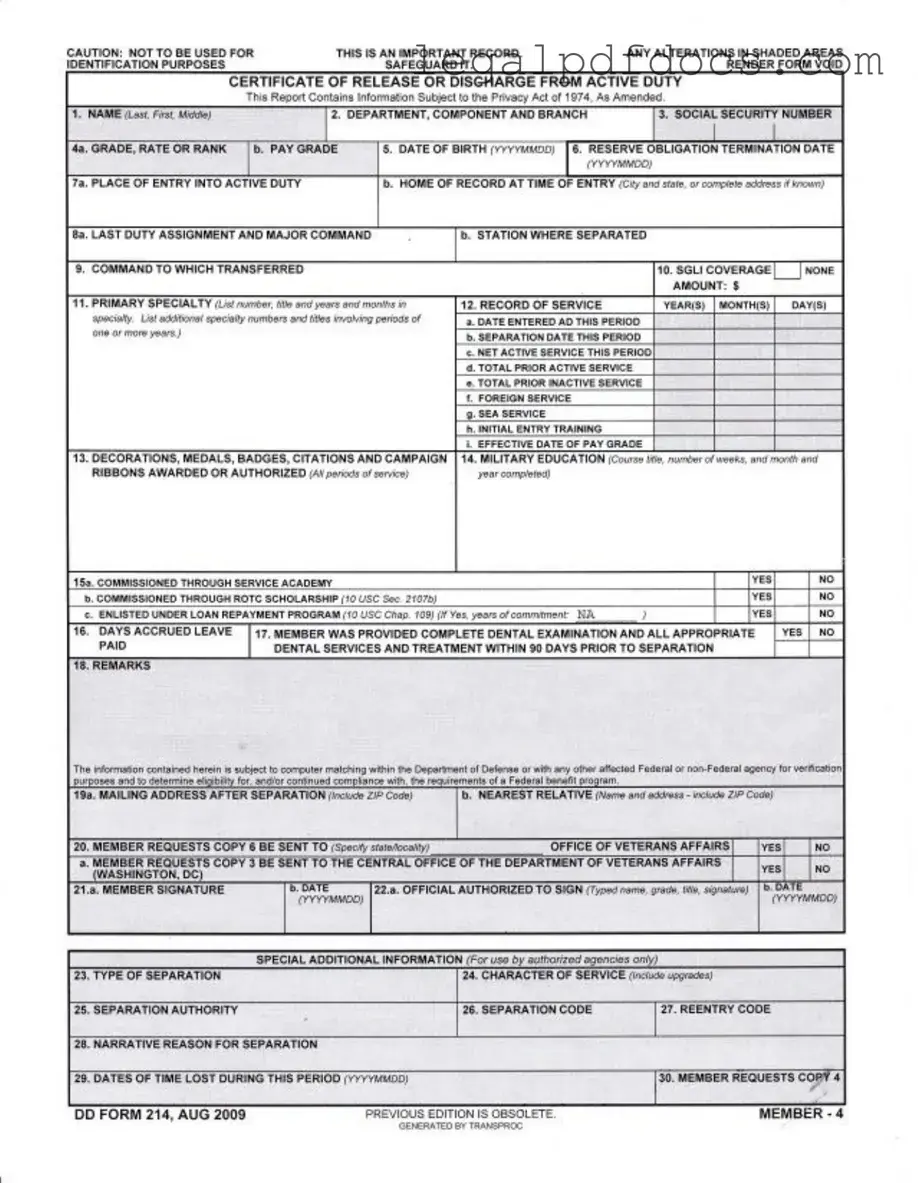Fill Out a Valid Dd 214 Template
The DD Form 214, officially known as the Certificate of Release or Discharge from Active Duty, is a vital document for military personnel. It serves as a comprehensive record of a service member's time in the military, detailing their service history, character of service, and any awards received. Understanding how to properly fill out and safeguard this form is crucial for veterans seeking benefits and recognition; click the button below to start the process.
Open Dd 214 Editor Here
